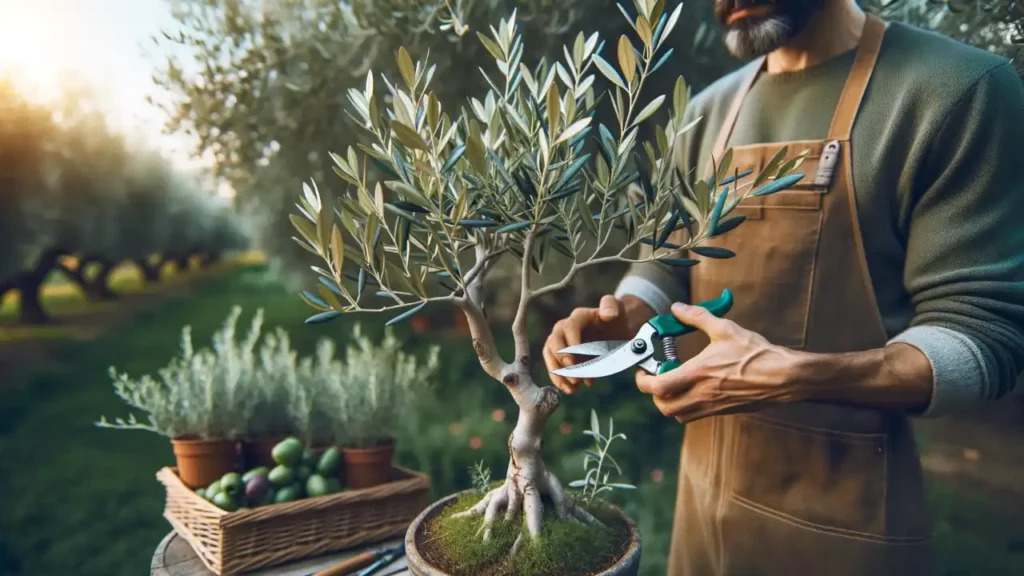Introduction to Olive Tree Pruning
Olive trees, with their gnarled trunks and silvery leaves, are not just producers of the delectable olives we enjoy; they are symbols of endurance and timelessness. Native to the Mediterranean region, these trees have been cultivated for thousands of years, and pruning has always been an integral part of their care. Proper pruning ensures healthy growth, maximizes fruit production, and gives the tree its characteristic shape.

Why Prune Olive Trees?
Health and Vigor
Regular pruning removes dead or diseased branches, allowing the tree to direct its energy towards healthy growth. This not only strengthens the tree but also reduces the risk of diseases spreading.
Improved Fruit Production
Olive trees bear fruit on the previous year’s growth. By pruning and shaping the tree, you ensure that there’s ample sunlight penetration, which is crucial for budding and fruit development.
Aesthetic Appeal
Pruning gives olive trees their picturesque appearance. Whether you desire a tree with a dense canopy or a more open, airy structure, pruning helps achieve the desired look.
When to Prune Olive Trees
The Ideal Season
Late winter to early spring, just before the onset of the new growth season, is the best time. This period ensures that the tree heals quickly and is ready to burst forth with new growth in spring.
Young Trees vs. Mature Trees
Young olive trees benefit from formative pruning in their initial years, shaping their future growth. Mature trees, on the other hand, require maintenance pruning to remove dead wood and encourage fruiting branches.
Essential Pruning Techniques
Thinning
This involves removing select branches to open up the tree’s canopy. It ensures better air circulation and sunlight penetration, both vital for fruit production.
Topping
If your olive tree is growing too tall, topping helps reduce its height. Cut back the main vertical stem to encourage lateral growth.
Lateral Pruning
This technique focuses on the side branches. By shortening long lateral branches, you encourage the growth of fruiting wood closer to the main trunk.
Suckering
Olive trees often produce shoots or “suckers” at their base. Regularly removing these ensures that the tree’s energy isn’t wasted on non-fruiting growth.
Tools of the Trade
Pruning Shears
Ideal for cutting branches less than ¾ inch in diameter. Ensure they are sharp to make clean cuts.
Loppers
For branches that are too thick for shears but too thin for saws, loppers are your best bet.
Pruning Saws
For the thickest branches, a pruning saw offers the necessary cutting power.
Safety First
Always wear gloves to protect your hands and safety goggles to shield your eyes from falling debris.
Common Pruning Mistakes to Avoid
Over-pruning
While it’s essential to prune, overdoing it can stress the tree. Always ensure you’re removing no more than 1/3 of the tree’s canopy in a single session.
Ignoring the Central Leader
Olive trees typically have a central leader or main trunk. Avoid cutting this as it gives the tree its structure.
Making Ragged Cuts
Clean cuts heal faster and are less susceptible to diseases. Ragged cuts can be entry points for pests and pathogens.
Conclusion
Pruning is an art, a blend of understanding the tree’s biology and recognizing its aesthetic potential. With the right techniques and practices, your olive tree will not only thrive but also become a centerpiece of beauty in your garden. Remember, each cut is a conversation with the tree, guiding it towards health, productivity, and elegance.




